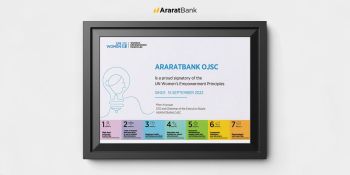In reality, many billion-dollar businesses are born from unnoticed problems that everyone has simply adapted to and stopped seeing.
These problems usually sit at the intersection of three factors:
-
a frequent pain point,
-
large or growing flows — of money, data, or transactions,
-
low digitalization or multiple layers of intermediaries.
If at least two of these three factors are present, there’s often a huge opportunity hidden there.
Five examples of “unlikely” places where big opportunities were born
1) Automating the “paper overload” of small businesses
Hidden issue: Accounting, tax, and contract documentation in small companies is often compiled manually, with repetitive spreadsheets and incompatible tools.
Solution: A unified platform connecting invoicing, contract templates, regulatory checks, and reminders into a single workflow.
Why it became a big market: Small businesses make up a large share of most economies, and each automated process saves time and reduces costly errors.
Quick validation checklist: Choose one sector (e.g., services), describe the three most repetitive processes, test a minimum viable product with a one-week onboarding, and measure retention after one month.
2) Transparency in the “last mile” of local logistics
Hidden issue: City and suburban delivery networks have fragmented players, unpredictable prices, and empty return trips.
Solution: A platform that optimizes freight matching, driver scheduling, and return routes — using data-driven dynamic pricing.
Why it became a big market: As more sales move online, delivery costs become a core factor of competitiveness.
Quick test: Pilot in three neighborhoods, monitor pricing dynamics, driver utilization, and delivery delay percentage.
3) Digitizing the “fragmented” home renovation market
Hidden issue: Comparing craftsmen, materials, and prices often relies on word-of-mouth or dozens of phone calls.
Solution: A local aggregator offering digital measurement templates, photo-based automatic estimates, and a secure contract and payment flow.
Why it became a big market: Housing constantly needs renovation, and trust gaps are large. Transparency stimulates demand.
Quick test: Pick three job types (e.g., plastering, flooring, electrical work), run a seasonal campaign, track complaint rates and repeat orders.
4) System for managing healthcare queues and certificates
Hidden issue: Paper certificates, duplicate records, and leftover pandemic-era waiting lines still cost hospitals and patients time and money.
Solution: A unified online booking system that integrates doctors’ availability, digital test results, and multiple payment options.
Why it became a big market: Saving time and reducing errors measurably cuts system costs, while higher patient satisfaction drives repeat visits.
Quick test: One clinic, two departments, three metrics — no-show rate, rescheduling speed, and patient satisfaction scores.
5) Export support for small producers: “microfinance + order insurance”
Hidden issue: Local producers want to sell abroad but fear prepayments, logistics, and buyer credit risk.
Solution: A platform that verifies buyer reliability, insures the order, and provides short-term financing tied to delivery.
Why it became a big market: The global market is open to niche products, and lowering financial and logistical barriers multiplies transaction volumes.
Quick test: One product cluster (e.g., food industry), three countries, one insurance partner, calculate average payment delay.
How to find “hidden” opportunities: a step-by-step method
Observe real life.
Go where there’s “friction” — queues, repeated paperwork, multiple calls, inconsistent prices.
Pay attention to actions justified by “that’s just how we do it” — this usually signals inertia, not best practice.
“Flow map.”
Draw three flows: money, information, and physical goods. Where are the bottlenecks, duplications, hidden intermediary margins?
Any point where payments, data, or goods pass through more than three hands is a potential digitalization candidate.
Regulatory “radar.”
Check for upcoming policy shifts: simplified licensing, mandatory e-signatures, new reporting rules.
Regulatory change often creates a window when many market players simultaneously need the same solution.
Early demand “goosebumps.”
Tasks that people currently solve manually — with spreadsheets, messages, and calls — usually signal real, not artificial, problems.
If users are willing to compensate the solution with time or a small fee even before it’s perfect, that’s a strong signal.
Look for the digital footprint.
Search for passive data: Google queries, job postings, professional forum complaints.
The higher the intensity and diversity of complaints, the less solved the problem is.
Define your metrics before building
-
Low acquisition cost. How much time and money are needed to get one paying customer?
-
Repetition. Does the problem occur weekly or monthly? Recurring issues are more likely to scale.
-
Margin and turnover. If per-transaction profit is small, volume must be large. Calculate annually in advance.
-
Stickiness. How easily can users revert to the old method or a competitor? Digital archives, integrations, and automation increase retention.
30-day rapid testing plan
-
Days 1–3: Describe the problem in one sentence and define your target segment.
-
Days 4–10: Build a prototype — even if semi-manual.
-
Days 11–20: Test direct sales with ten customers and try several pricing options.
-
Days 21–30: Measure retention and outcomes — payments, online reviews, return rate, and simplified offers.
The secret of differentiation
-
Value cycle, not feature. Focus on closing the entire flow — from discovery and order to payment, delivery, and accounting.
-
Trust engineering. Guarantees, insurance, anti-fraud, and transparency replace the “ask a friend” culture.
-
Local depth. Become the benchmark in one city or sector, then expand. It’s better to dominate one market than to be shallow everywhere.
What to watch out for
-
“Magic wand” technologies. Trendy tools can’t fix a poorly defined problem. Start from the real process, then choose the tech.
-
Wrong customer. It’s better to work directly with paying end-users than with intermediaries who may change their intentions.
-
Regulatory traps. If the industry is heavily regulated, align with legal requirements and build compliance in from the start.
In conclusion — one simple principle
A big opportunity is anything people do every day in a complicated way that you can make simple, predictable, and reliable.
Find where the pain repeats often, the money flow is large, and digitalization is low — that’s where your next big business is hidden.
The article is based on the analysis of the Entrepreneur
*The article was also prepared using data from AI․











 Subscribe
Subscribe







